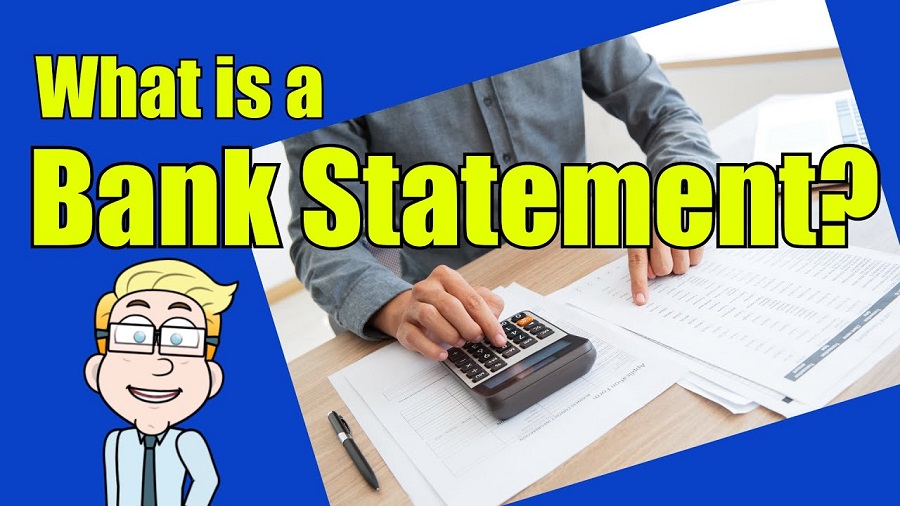
What Is a Bank Statement and How Do You Read One?
Understanding your bank statement is an important part of managing your finances. These monthly documents give you a clear view of how much money is coming in, going out, and what your balance looks like at any point in time. But if you’re not used to reviewing them, all the numbers and banking terms can be confusing.
Whether you’re opening your first account or reviewing your finances more closely, learning how to read a bank statement can help you stay on top of your spending, catch potential issues early, and budget more effectively. Here’s a complete guide to what bank statements are, what information they include, and how to read one with confidence.
What Is a Bank Statement?
A bank statement is a summary of your account activity over a specific period—typically one month. It’s issued by your bank or credit union and includes all transactions that occurred within that time frame.
You’ll receive a statement for each account you have, such as checking, savings, or money market accounts. Most banks now offer digital statements through online banking, but paper versions are still available if requested.
If you bank locally—such as with a bank in Monroe County—you can often choose how you’d like to receive these documents when opening your account.
Why Bank Statements Matter
Bank statements provide a detailed snapshot of your financial activity. They’re useful for:
-
Tracking spending habits
-
Verifying deposits and withdrawals
-
Catching fraudulent transactions
-
Keeping tax records
-
Applying for loans or mortgages
-
Budgeting and financial planning
Because they reflect your actual account activity, bank statements are often required documentation when proving income or account history.
Where to Find Your Bank Statement
You can usually access your bank statements in a few different ways:
-
Online banking portal: Most banks allow you to view and download statements as PDFs
-
Mobile apps: Statements may be accessible under your account settings or documents section
-
By mail: Some banks send printed statements each month
-
In-person: Visit a local branch and request printed statements if needed
If you’re using a bank in Monroe County, they may also offer hybrid options—such as emailed statements or pickup at a nearby branch.
Key Sections of a Bank Statement
A bank statement can look a little different depending on the financial institution, but most include the same basic information. Here are the main sections you’ll find:
1. Account Information
This section includes:
-
Your name and mailing address
-
Bank name and contact info
-
Account number (partially masked for security)
-
Statement period (start and end date)
Make sure the details match your records and report any discrepancies to your bank.
2. Statement Summary
This portion gives you an overview of your account’s activity during the statement period. It typically includes:
-
Starting balance
-
Total deposits and credits
-
Total withdrawals and debits
-
Ending balance
The statement summary is useful if you want a quick glance at how your balance changed over the month.
3. Transaction Details
This is the most detailed part of your statement and usually takes up the most space. It includes:
-
Dates of each transaction
-
Descriptions of merchants, locations, or payment types
-
Amounts listed as credits (money in) or debits (money out)
-
Running balance (after each transaction, depending on the bank)
Common types of transactions include:
-
Direct deposits (paychecks, transfers)
-
Debit card purchases
-
ATM withdrawals
-
Checks
-
Online transfers
-
Service fees
This section helps you track your spending patterns and catch any unauthorized transactions.
4. Bank Messages or Notices
Some banks include a small section with messages about new services, policy updates, or upcoming changes. These may also include reminders to update your contact information or enable security features.
How to Read Your Bank Statement
Now that you know what’s included, here’s how to review your statement effectively.
Step 1: Verify Personal and Account Info
Make sure your name, account number, and address are correct. If you see any errors, reach out to your bank’s customer service right away.
Step 2: Review the Statement Summary
Compare your starting and ending balances to previous months. Large changes may warrant a closer look at individual transactions.
Step 3: Go Through Each Transaction
Line by line, look at your deposits and withdrawals:
-
Are all charges accurate?
-
Are there any unfamiliar transactions?
-
Are recurring bills coming out on the correct dates?
Highlight anything that seems incorrect or out of place. Contact your bank if you spot suspicious activity.
Step 4: Watch for Fees
Banks may charge monthly service fees, overdraft fees, or ATM fees. These are typically small charges, but they can add up over time. Reviewing them monthly gives you a chance to ask about waivers or switch to a more suitable account.
Step 5: Check for Direct Deposits
If you’re expecting a paycheck or recurring deposit, verify that it arrived on time. Some people track these deposits for income verification purposes, especially when applying for loans or credit cards.
Tips for Staying Organized
Here are some tips to help you manage your statements more effectively:
-
Download or save your digital statements each month
-
Store them in a secure cloud folder or encrypted drive
-
Use your bank’s budgeting tools (if available)
-
Create a monthly checklist to track recurring payments and income
-
Reconcile your statement with any budgeting apps or spreadsheets you use
If you use a local bank in Monroe County, many offer customer support to help you set up a recordkeeping system or walk you through your statement in person.
Common Questions About Bank Statements
How Long Should I Keep My Bank Statements?
It’s a good idea to keep statements for at least one year. For tax or legal purposes, you may want to keep some for up to seven years, especially if they relate to large purchases or deductible expenses.
What If I Notice an Error?
If you find an incorrect charge or deposit, contact your bank immediately. Most banks have a limited window—usually 60 days—to dispute transactions.
Can I Access Older Statements?
Yes, most banks allow you to access previous statements through online banking. If not, you can request archived versions by calling or visiting a local branch.
Final Thoughts
Bank statements are more than just paperwork—they’re a valuable tool for managing your money. Learning how to read and understand them gives you more control over your finances, helps you stay organized, and protects you from potential fraud.
If you’re currently evaluating banking options or need help reviewing your statements, a trusted bank in Monroe County can offer personal guidance and digital tools to make managing your finances easier.


